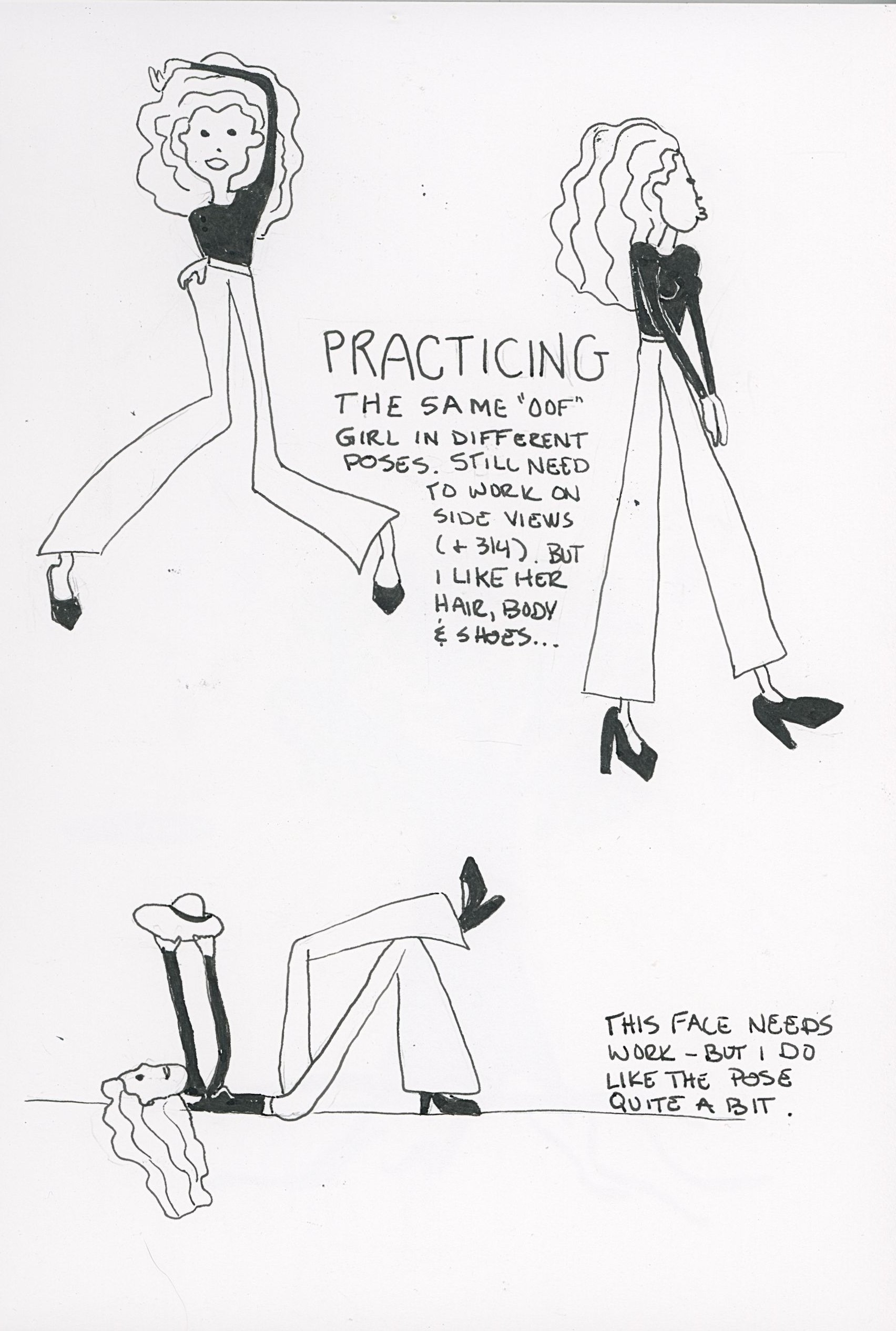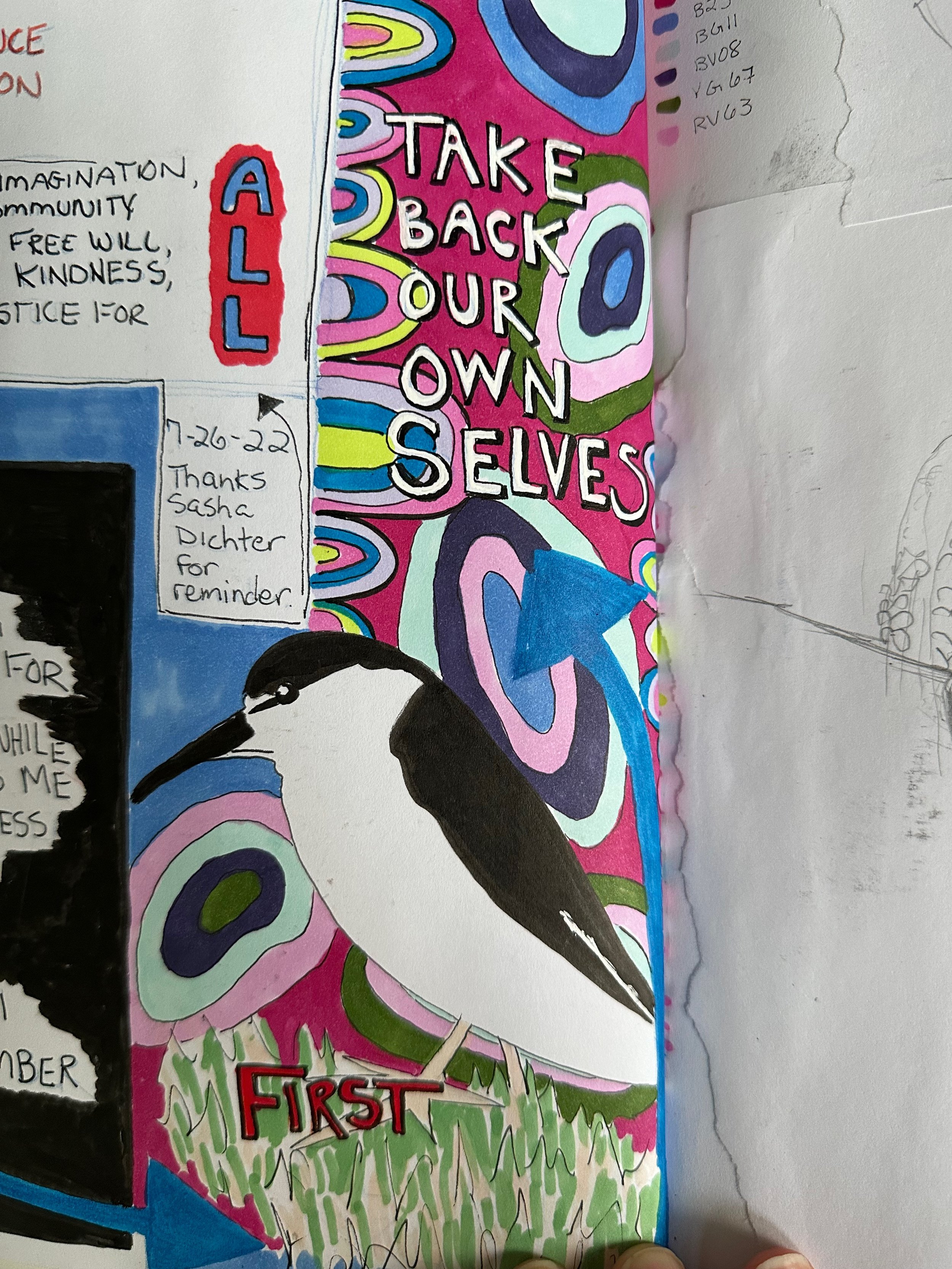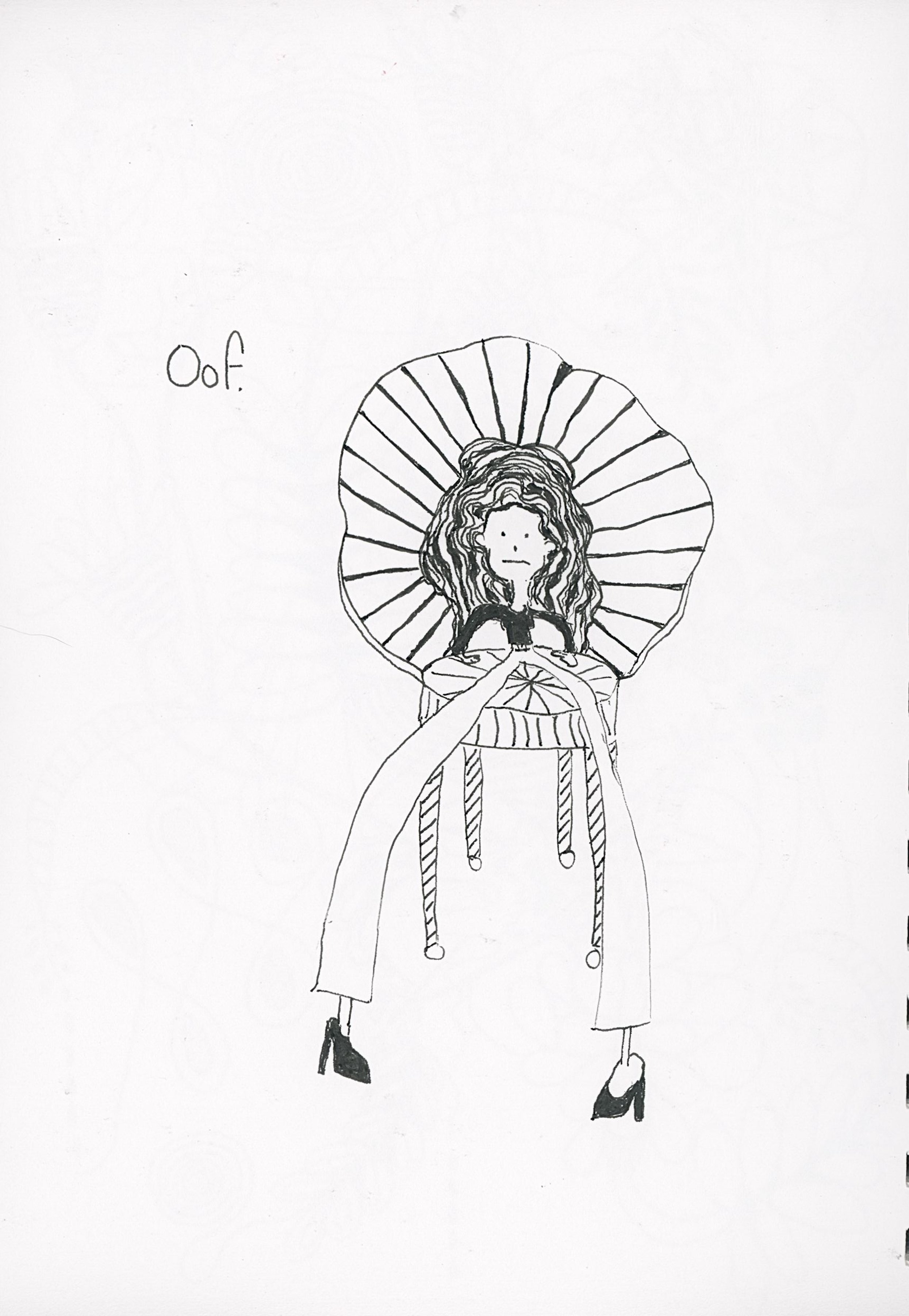How I'm creating a sketchbook habit that sticks
/As I explained last week I had a shift in how I look at my sketchbook practice, and I promised to share how I’m now creating a sketchbook habit. And while I’m at it, I thought I’d share a few sketchbook pages from the last year.
First, I can’t emphasize enough
I had doubts about why I was spending time in a sketchbook, but now I get it. Making a list of all the benefits made me realize…well, I feel the need to repeat this list here:
The PLEASURE of pen or brush on the page
The lovely feeling of being fully PRESENT
The surprise when DISCOVERING new line, shape, texture…
Really SEEING while drawing from life
The absolute fun of INVENTING while drawing from imagination
The satisfaction of LEARNING craft
CONNECTING with Self—responses, challenges, emotions, voice
EXPRESSING my Self
BUILDING SKILL over time
The unexpected JOY in any of the above.
These are all the reasons I need for working in my sketchbook every day.
What is there to doubt?
Hah—let me count the ways (on my fingers)! One, Fear of the blank page. (What do I draw today?) Two, fear of disappointment (What if what I draw is bad?) Three, all the other things on the schedule (Do I have time for this?) Four, SELF doubt. (Should I be spending my time in my sketchbook? Surely, there are more important things…)
And five, the kicker, feelings.
In yoga we used to say, “different day, different body” but it’s also true for the heart: “different day, different feelings.” Every day we have to wrestle with the here and now. One day I feel…motivated and excited, but another day I don’t “feel like it,” which is usually because I actually feel stressed or sad or worried or tired.
And of course that is the problem with almost anything worth doing—I used exercise as an example last week, but it applies to any action we want to take consistently in our lives. We may WANT to do the thing. We know consistent action will make us healthier, stronger, happier, more rested, more skilled, happier—but every day is a new day with new choices.
And so we need habits
Once established, habits take over and we just do the thing.
Yet, creating habits isn’t so easy. I’m sure you’ve read as much about habits as I have —it’s a popular topic on the interwebs, and this popular book seems to cover it all (although I haven’t read it)—so I won’t add to the noise.
What I can tell you that might be helpful is what I’m doing. Your mileage may vary, but maybe this will give you some ideas.
My Seven recent strategies to create a sketchbook habit that sticks
1. Commit and Prioritize
I decided—finally—that I am going to give my sketchbook priority seating in my life and art practice. My sketchbook will be a daily activity. Commitment is a decision and I have decided not to question why or whether I should work in my sketchbook today. The answer is I know why and yes I should.
2. Eliminate the challenge of the blank page
Facing the blank page intimidates the best of artists. It’s just a thing—and too many days when I had no ideas for what to draw I didn’t open my sketchbook at all.
The solution to a daily sketchbook habit has turned out to be ridiculously easy. I don’t know why I didn’t do it before.
I’ve made a daily ritual to start by drawing something I see with my own eyes.
I can choose something in my line of sight or I can go looking for something to draw in my house, out in my neighborhood—or I can get in the car and drive somewhere. But all I need to do to start is to draw something I see.
From there, ideas flow. And not only is it a great strategy to get started, it’s always good exercise to practice drawing from life.
3. Remove issues with time
It’s really easy on any given day to feel like I don’t have enough time to work in my sketchbook, so to remove that barrier, I have set a minimum and a maximum time limit for for my sketchbook practice.
Minimum: 15 minutes. All I’m requiring of my sketchbook habit is 15 minutes/day. That is such a small amount of time it just doesn’t matter what else I have to do, I can do that.
Maximum: 1 hour.
The other issue with sketchbook time for me is that I often enjoy it so much (once I get past the start) that I lose track of time and suddenly hours have gone by and I’ve spent all the time I had that day in my sketchbook, when in fact I have many other projects and priorities I also wanted to do. So a maximum limit reassures the part of me that worries about time that not only do I have enough time, but I won’t take too much.
(I am known to go back to my sketchbook in the same day if it calls to me and I have time—but I consider those drawing sessions extra.)
4. Set up a routine
It’s consistency of action that turns it into a habit, and routine really helps. So I make it a routine to begin my work day in my sketchbook. First I sit down and schedule my plan for the day in my planner, and then I open my sketchbook and I begin. Fifteen minutes to one hour later, I then turn to the next item on my list.
Also, I’ve set up a weekly routine to review my sketchbook in my planner, noting 1) what I liked, 2) what didn’t work, 3) what I learned. This is a great way to keep track of progress and set new direction from week to week.
5. Establish purpose
Different artists keep different kinds of sketchbooks—some are messy workbooks—pages of rough sketches, experiments, practice and explorations. They are tools for making other art. And some artists fill sketchbooks with beautiful pages to share.
In the past when I did a lot of art journaling, it was my goal to fill books with compositions that pleased me and that I felt proud to share with others, but then I wanted to learn and develop my skills so I started sketching and doing many more rough takes. And to date, I think I never stopped doing either. I go back and forth until I’m dizzy!
With clarity around why I keep a sketchbook, I now understand that my goal is not to fill my sketchbook with pretty pages. I can and do make completed drawings and paintings elsewhere, but here, my purpose is to enjoy myself and develop ideas. This is not final draft work. It’s space to experiment, fail, learn new methods and think through ideas…that I’m confident will lead to my growth as an artist and what I make.
6. Refuse perfectionism!
I think I had it in the back of my mind with every sketch that I might share it on instagram or here on the blog, which means often subconsciously I tried to be too perfect. Now I’m throwing out any need for perfection in my sketchbook and I give myself full permission to either not share pages—or share imperfect ones. I know I love to look through other artist’s sketchbooks filled with rough drafts, half formed ideas and weird imperfect images—and that’s my goal for my sketchbooks too.
7. Dive deeper
(I’m pretty sure this isn’t a magpie)
With a daily sketchbook habit, I now know that today and the next and the next for the foreseeable future I’ll be drawing—suddenly I feel like I have much more time to really explore. In the past, I think I hopped away too quickly from one inspiration to the next—drawing for a few days, then stopping, then starting somewhere else, then starting up again with a lot of enthusiasm—until something else caught my eye.
And sure, I’ll always be like the magpie and follow the shiny ball—but now I think I’ll slow down and play with that ball a little longer before moving on—the next day.
I hope by sharing a little of my sketchbook journey that you’re inspired to create a sketchbook habit of your own!










